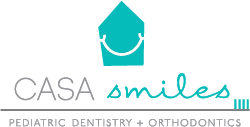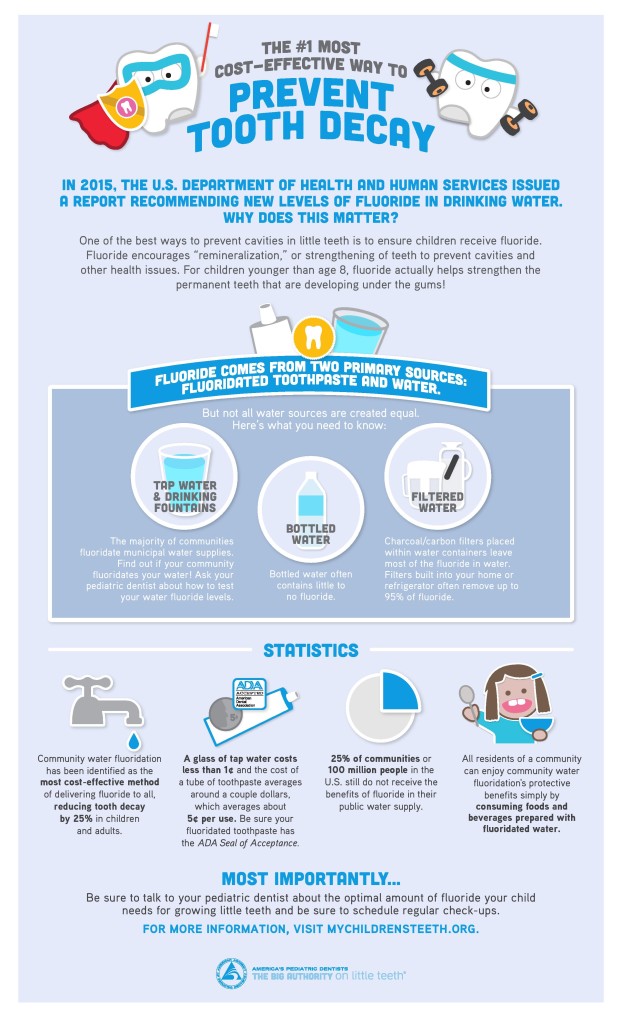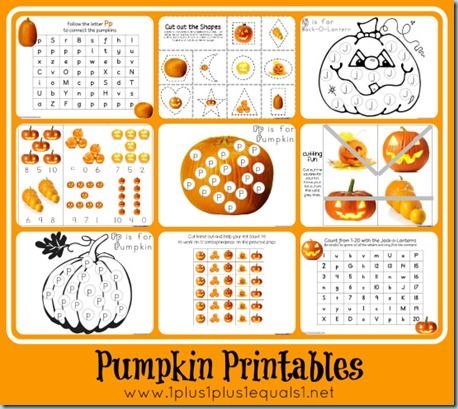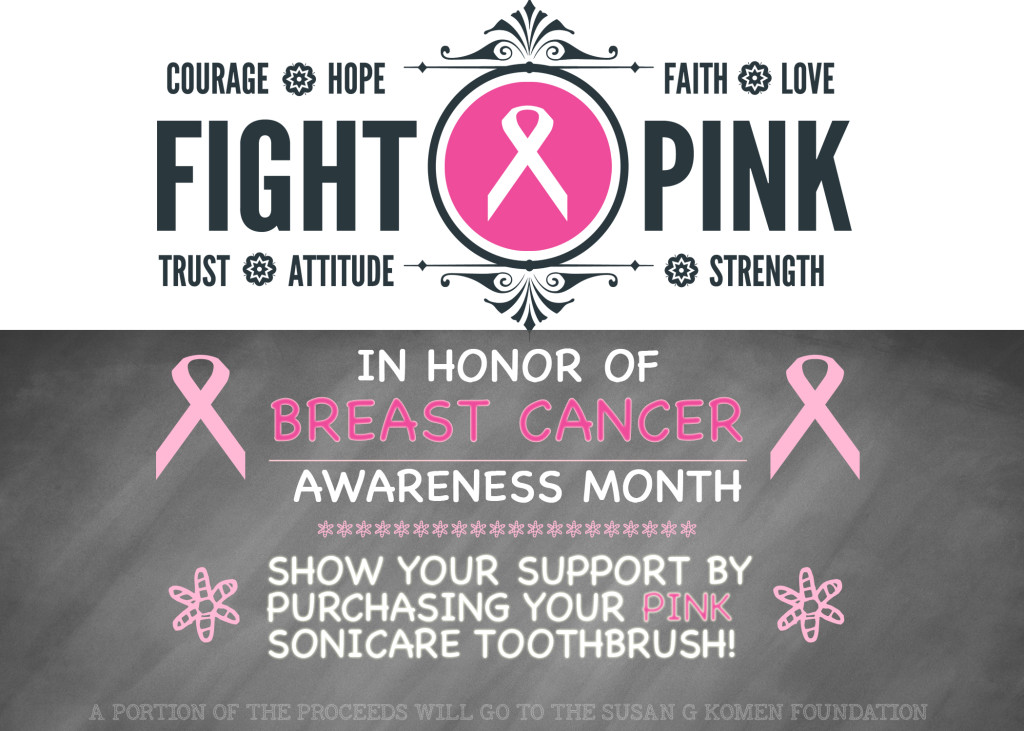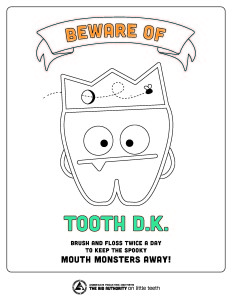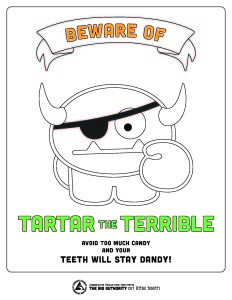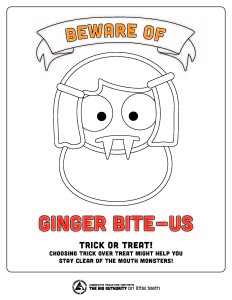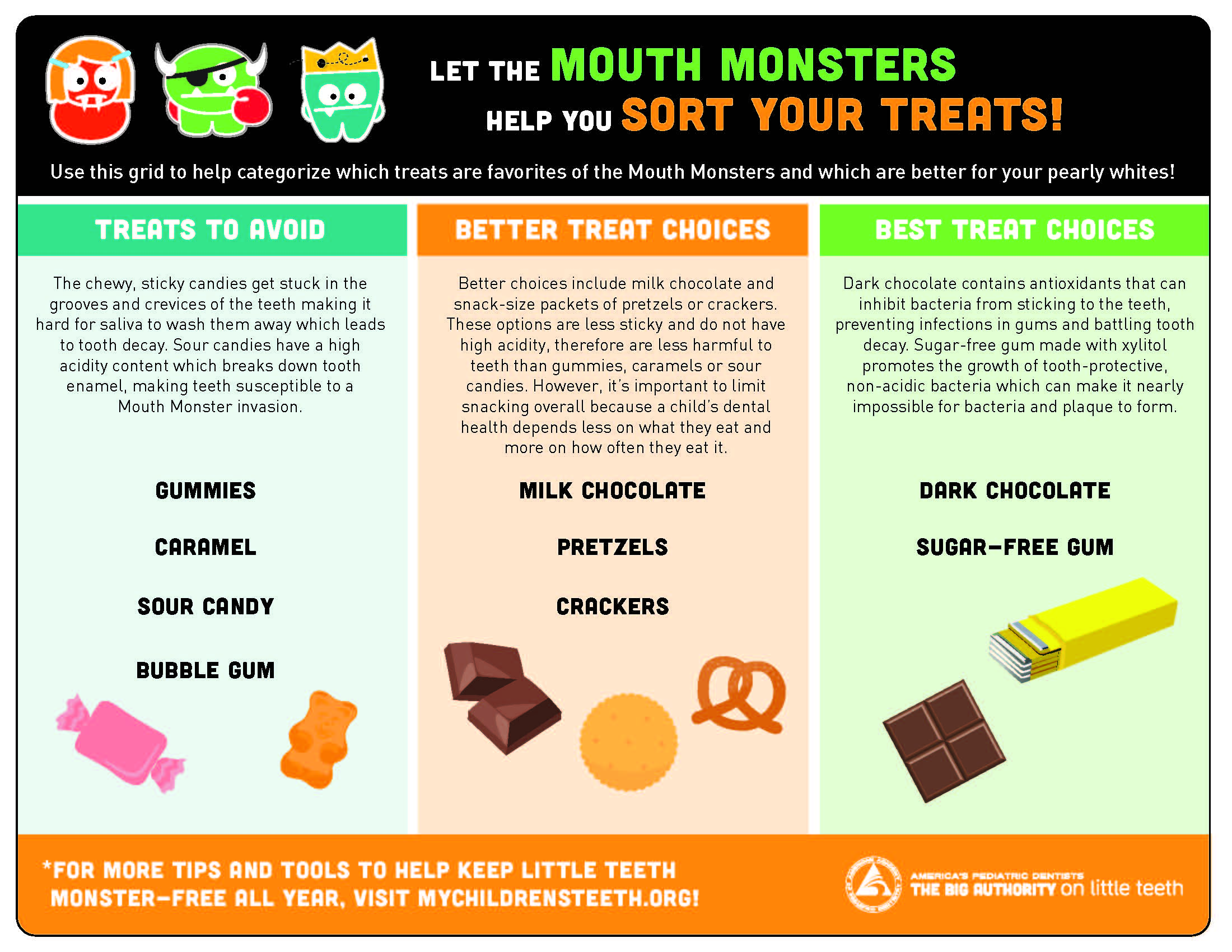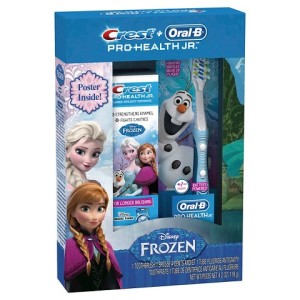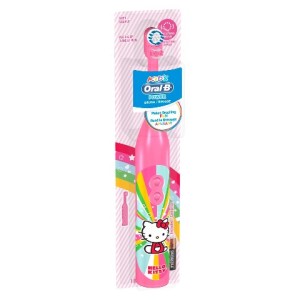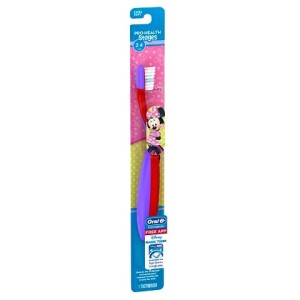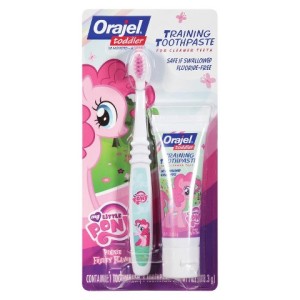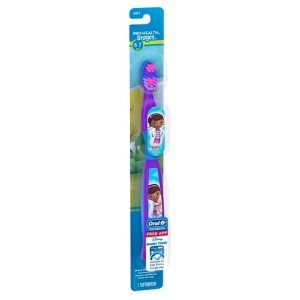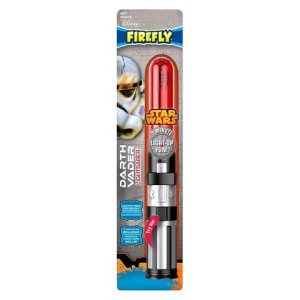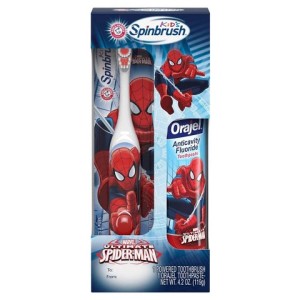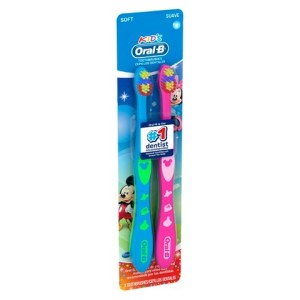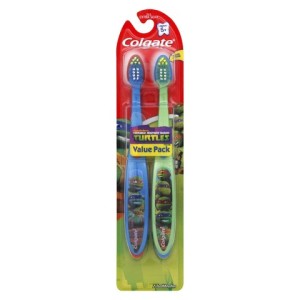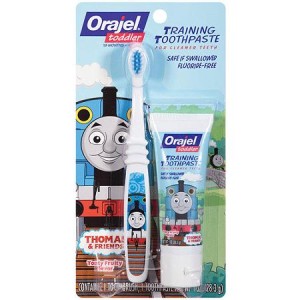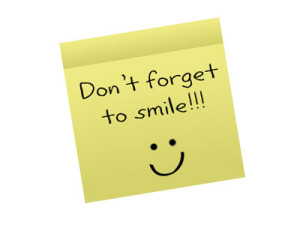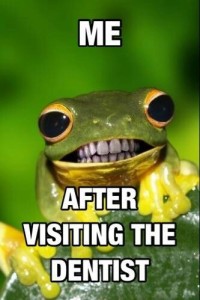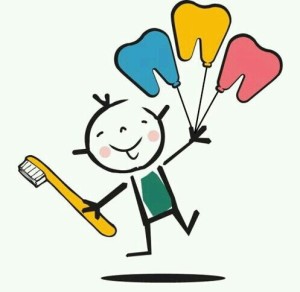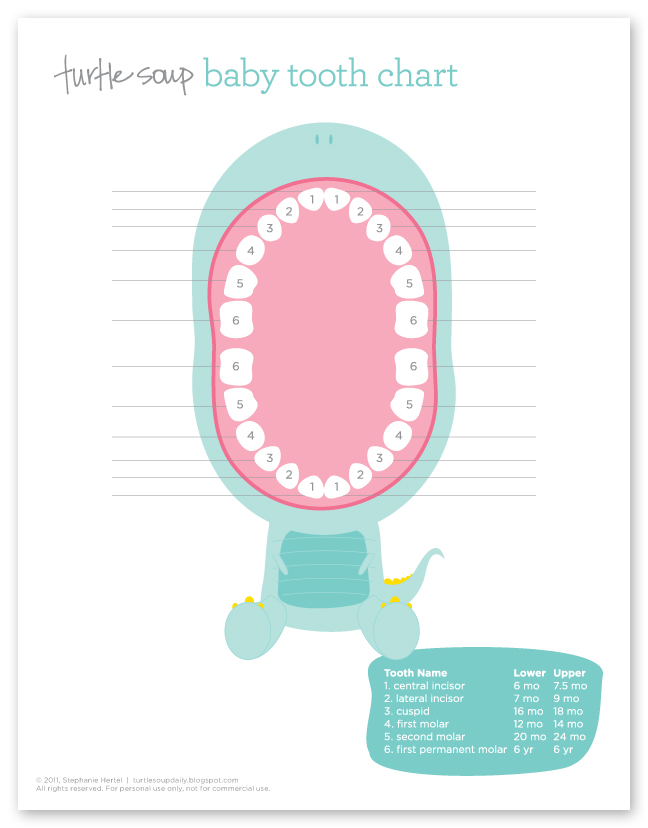Happy “Tooth-Day”!
Farah Flossit here, wishing you a great start to the Fall Season:)
Picking up where I left off last week, now that you know how to start good oral hygiene habits with your baby, lets chat about what to expect when their little pearly whites begin to break through. As I mentioned before your baby will probably begin teething as early as 3 months so before I go on to Toddler Oral Care, I wanted to discuss some misconceptions about teething. Your baby will be growing & developing quickly; creeping, crawling, walking, talking. You can also add teething to that list of memorable stages.
FEVER & DIARRHEA MISCONCEPTION:
Fever is not a symptom of teething. It is probably attributed to illness. There are conflicting opinions about this topic, but the American Dental Association, Mayo Clinic, as well as many other medical experts report that an elevated temperature is not a normal symptom. They also disagree that diarrhea, another commonly listed symptom, is not normal. Due to increased chewing & drooling, teething babies are often exposed to more viruses that can cause these symptoms. So, if you find that your little one has a temperature, make sure to visit your pediatrician for the appropriate treatment.
TOO YOUNG TO BE TEETHING:
Although I think I have addressed the possible timeline of when to expect eruption of teeth, I will emphasize that it is possible for your baby to start teething as early as 3 months. You can refer the to tooth chart in our previous post to get an idea of what teeth to expect. Not all children are “typical”, nor do all children follow the same development, so don’t worry if your child is slightly ahead or behind, just always consult your Pediatrician & Dental Professional with any questions or concerns.
NO SOLID FOOD UNTIL TEETH ARRIVE:
Most children are capable of eating certain solid foods (that are soft or semi-soft) before his or her primary teeth erupt.
The American Academy of Pediatrics which recommends breastfeeding as a sole source of nutrition until 6 months of age, provides the following guidelines for determining your child’s developmental readiness for solid foods:
- Can he hold his head up? Your baby should be able to sit in a high chair, feeding seat, or infant seat with good head control.
- Can he open his mouth when food comes his way? Babies may be ready if they watch you eating, reach for your food, & seem eager to be fed.
- Can he move food from a spoon into his throat? If you offer a spoon of rice cereal & he pushes it out of his mouth & it dribbles onto his chin, he may not have the ability to move it to the back of his mouth to swallow it. It’s normal. Remember, he’s never had anything thicker than breast milk or formula before, & this may take some getting used to. Try diluting it the first few times, then gradually thicken the texture. You many also want to wait a week or two & try again.
- Is he big enough? Generally, when infants double their weight (typically at about 4 months) & weigh about 13 pounds or more, they may be ready for solid foods.
NO CAVITIES CAN FORM IN NEWLY ERUPTED TEETH:
Good oral health should be a priority from the onset. The truth is that tooth decay & cavities can develop in newly erupted teeth. Before teeth emerge, the Academy of General Dentistry suggests rubbing infant gums. They should be rubbed 2x daily with a clean, damp cloth. Once teeth start coming in, you should gently brush them with a moistened children’s toothbrush & start the regular visits to the Dentist.
HELLO TEETH-GOODBYE NURSING (not true!):
If you’ve chosen to nurse your baby, teething DOES NOT mean you have to stop nursing. The American Academy of Pediatrics recommends breast milk as a child’s exclusive source of nutrition for the first 6 months. Once solid foods are introduced, mothers who breastfeed may continue to do so.
La Leche League International, an international organization that helps breastfeeding mothers, offers tips for making breastfeeding more comfortable while teeth are erupting.
Healthy teeth are crucial for chewing solid food & speaking. Therefore, as soon as you see teeth in your little one’s mouth, it’s time to plan your first dental visit. Brushing should begin & as soon as two teeth are touching, flossing should also begin. Below are the first steps to take & keep in mind as you embark in establishing good oral habits from the start. Each child has different skills & needs that can guide parents in helping him or her brush.
MAKE IT A GOOD, CLEAN, & FUN EXPERIENCE
- Choose a toothbrush-It can be fun for your little guy or girl to choose their favorite character toothbrush. Use a soft-bristled toothbrush designed for brushing an infant’s or child’s teeth.
- Holding a toothbrush-If the child has trouble holding a toothbrush, try making the handle thicker by putting it inside a tennis ball. The toothbrush handle can also be strapped to the child’s hand with a wider rubber hand, a hair band, or Velcro. Toothbrushes with thick handles can also be found in retail & discount stores (stay tuned & I will dig up some cool finds for fun toothbrush choices for kids).
- Teaching the child how to brush-Break the process into small steps that the child can understand & practice. Use hand over hand to guide the toothbrush as the child brushes (put music on or sing a song to make it fun).
- Do not share toothbrushes-The exchange of body fluids that such sharing would put toothbrush sharers at an increased risk for infections, a particularly important consideration for persons with compromised immune systems for infectious diseases.
- Toothbrush storage-It’s a fact that bacteria can grow on toothbrushes after they’ve been used, especially if wet toothbrushes are kept in closed, dark places. Wet toothbrush bristles should not be covered. They should air dry.
- Keeping it clean-The Centers for Disease Control & Prevention (CDC) recommends: After brushing, it’s best to rinse toothbrushes with water to clean off remaining toothpaste & small pieces of food. Then the toothbrushes should be stored in an upright position to air dry. If several toothbrushes are stored in the same holder, make sure there is enough space between the toothbrushes so that they do not touch each other. Remember to label each toothbrush with your child’s name if they have the same one. Do not soak toothbrushes in bleach water or other disinfecting solutions. And toothbrushes do not need to be placed in dishwashers, microwaves, or ultraviolet devices to disinfect them. Theses methods may damage the toothbrushes.
I truly hope you are enjoying this collection of reports about Oral Care-as a timeline! The fun will continue next week when I share fun options for toothbrushes & how to prepare for your dental visits.
Thank you for tuning in on today’s Happy “Tooth-Day’s” report!
I look forward to chatting with you all next week!
In the meantime, you can follow us on Facebook https://www.facebook.com/casasmilespediatricdentistryandorthodontics?pnref=lhc. Instagram http://instagram.com/casasmiles/, Twitter https://twitter.com/casa_smiles, Yelp http://www.yelp.com/biz/casa-smiles-pediatric-dentistry-and-orthodontics-coral-gables & Pinterest https://www.pinterest.com/casasmiles/ to hear all about our daily news! You can always call or email us with any questions, concerns, to make an appointment, or for a complimentary Ortho Consultation http://www.casasmiles.com/contact-us/.
Your Friend,
Farah Flossit (Special Agent Flossit)
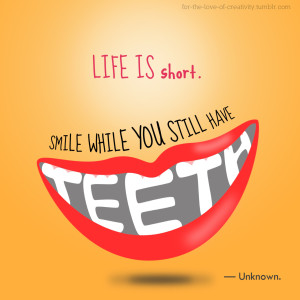
http://www.freelargeimages.com/smile-quotes-tumblr-5451/
